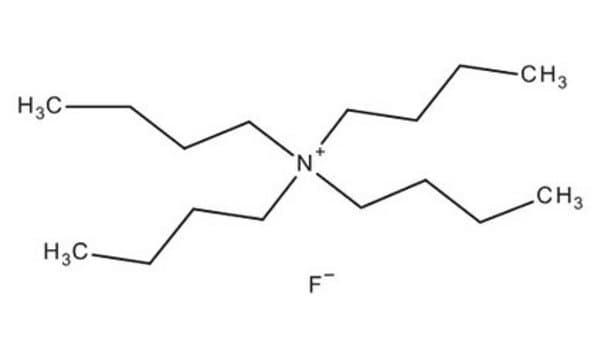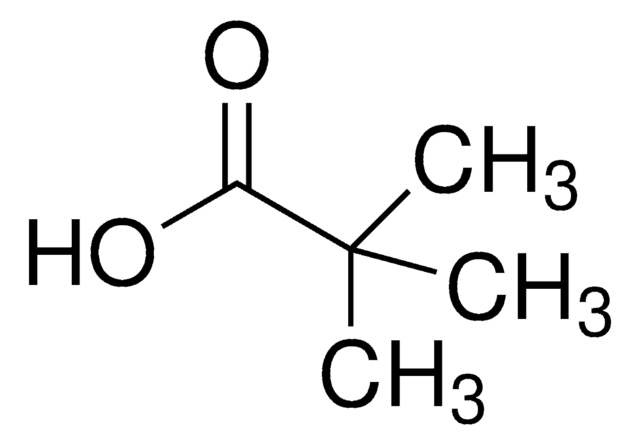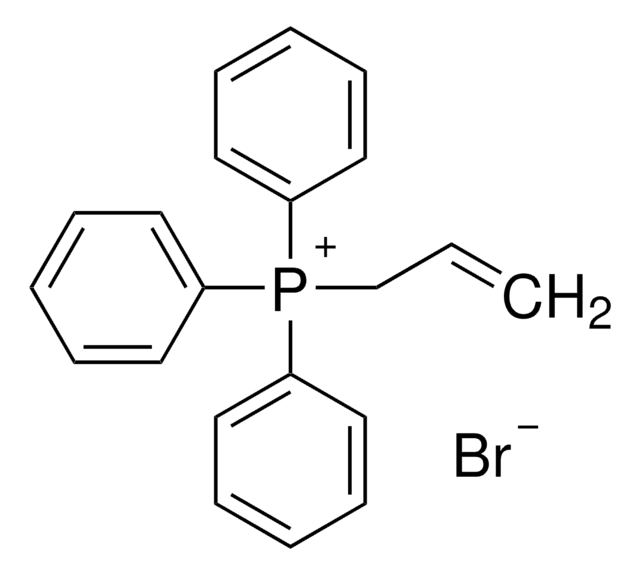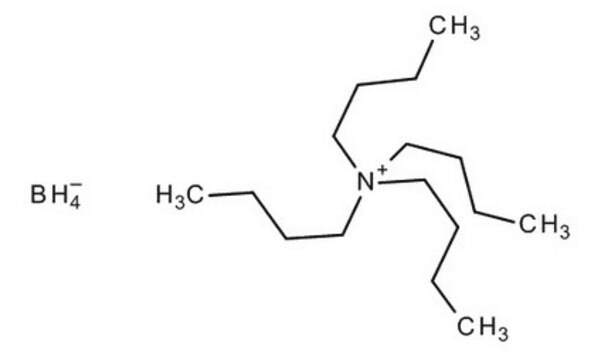8.18839
Tetra-n-butylammonium bromide
for synthesis
Sinónimos:
Tetra-n-butylammonium bromide, TBAB
About This Item
Productos recomendados
Quality Level
form
crystals
mp
100-103 °C
solubility
600 g/L
density
1.15 g/cm3
bulk density
700 kg/m3
storage temp.
2-30°C
InChI
1S/C16H36N.BrH/c1-5-9-13-17(14-10-6-2,15-11-7-3)16-12-8-4;/h5-16H2,1-4H3;1H/q+1;/p-1
InChI key
JRMUNVKIHCOMHV-UHFFFAOYSA-M
¿Está buscando productos similares? Visita Guía de comparación de productos
Application
- Cobalt-based MOF Nanoribbons: Tetra-n-butylammonium bromide is utilized in the synthesis of cobalt-based metal-organic framework (MOF) nanoribbons, which are applied for the cycloaddition of carbon dioxide to epoxides. This process is crucial for carbon capture and utilization, demonstrating the compound′s role in green chemistry solutions (Ullah et al., 2022).
- Phosphate Removal: In environmental applications, Tetra-n-butylammonium bromide is incorporated into polyacrylonitrile composite nanofibers to enhance the removal of phosphate from water, showcasing its utility in water treatment technologies (Wang et al., 2021).
- Iron(III) Spin-crossover Compounds: This quaternary ammonium salt is used in the synthesis of a rare octacoordinated mononuclear iron(III) compound with spin-crossover properties. This application is significant in materials science, particularly in the development of magnetic materials and sensors (Hao et al., 2020).
- Protein Extraction Technologies: Its application extends to the enrichment and extraction of hydrophobic proteins using fluoroalcohol-induced coacervates. This technique is vital for biochemical research and the pharmaceutical industry, where efficient isolation and purification of proteins are essential (Koolivand et al., 2018).
Analysis Note
Identity (IR): passes test
signalword
Warning
Hazard Classifications
Acute Tox. 4 Oral - Aquatic Chronic 3 - Eye Irrit. 2 - Repr. 2 - Skin Irrit. 2
Storage Class
11 - Combustible Solids
wgk_germany
WGK 3
Certificados de análisis (COA)
Busque Certificados de análisis (COA) introduciendo el número de lote del producto. Los números de lote se encuentran en la etiqueta del producto después de las palabras «Lot» o «Batch»
¿Ya tiene este producto?
Encuentre la documentación para los productos que ha comprado recientemente en la Biblioteca de documentos.
Los clientes también vieron
Nuestro equipo de científicos tiene experiencia en todas las áreas de investigación: Ciencias de la vida, Ciencia de los materiales, Síntesis química, Cromatografía, Analítica y muchas otras.
Póngase en contacto con el Servicio técnico














